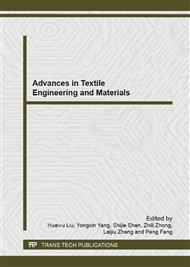p.655
p.659
p.672
p.678
p.682
p.687
p.694
p.698
p.705
Effects of Alumina Content on Microstructure and Properties of Alumina Dispersion Reinforced Copper Based Composites
Abstract:
Using high energy ball milling method through changing the content (mass fraction) of alumina to sinter alumina particle dispersion reinforced copper matrix composites with different Al2O3 contents. The effects of alumina content on the microstructure and properties of the sintered body were studied by microstructure observation, relative density, electrical resistivity and hardness test. The results show that when the milling speed was 1400r/min, with the increase of the content of alumina, the relative density decreased, the electrical resistivity increased, the hardness increased first and then decreased. When the Al2O3 content was 1wt% the maximal relative density was 96.4% and the lowest electrical resistivity was 30.843 nΩ•m.
Info:
Periodical:
Pages:
682-686
Citation:
Online since:
December 2012
Authors:
Price:
Сopyright:
© 2013 Trans Tech Publications Ltd. All Rights Reserved
Share:
Citation:


